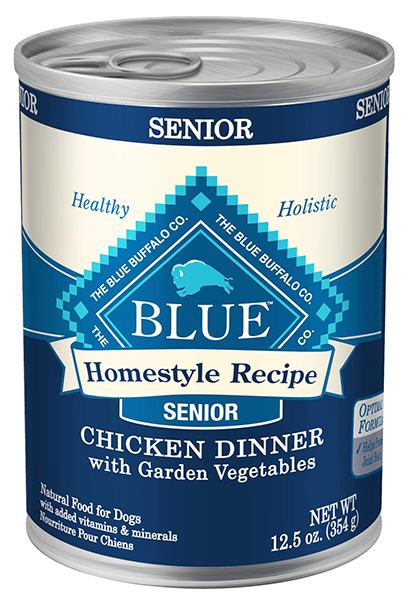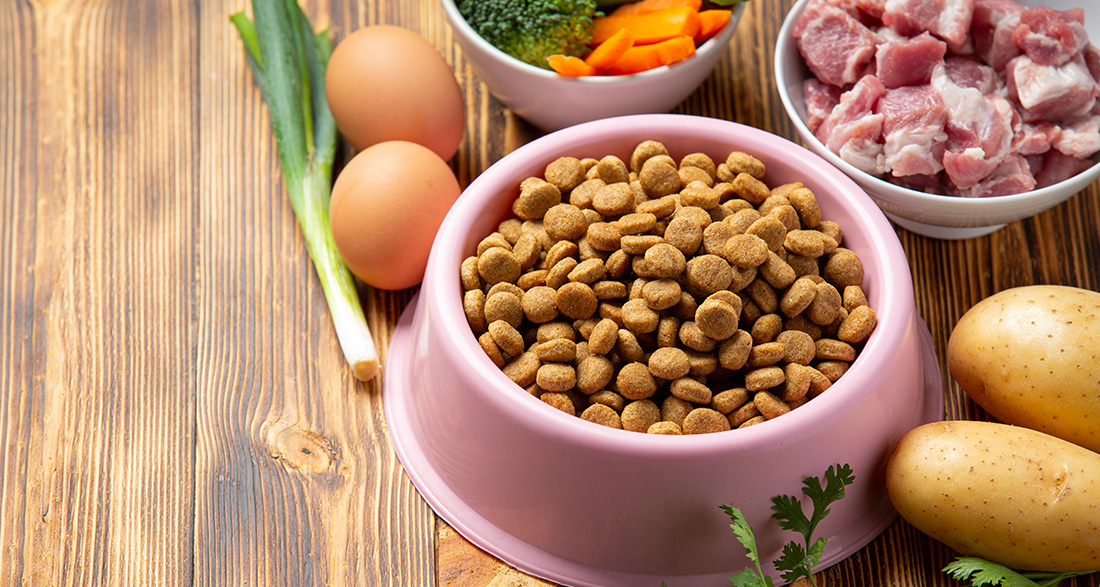If you pay attention to a few details, it’s not difficult to provide your dog with age-appropriate nutrition containing all the necessary nutrients. Learn below what you should consider in terms of food choice and feeding, my preferred food, and the supplements that can be beneficial for older dogs.
When looking for suitable food for your aging dog, you will notice that there are many different options for so-called “senior food” on the market. It is not necessary, however, to feed a specific senior formula. The prerequisite is that your dog already receives high-quality food (preferably wet food) with a high meat content.
- The digestion of the dog changes with age
- What you should avoid for older dogs, especially
- How should high-quality food for senior dogs be composed?
- My Wet Food Recommendation for a Comprehensive Healthy Dog Diet:
- Feeding Schedule – Better to Feed Multiple Times a Day
- Avoiding Overweight
- The Treats Issue
- Hydration is Key
iHugDogs is reader-supported. All of the links below may be paid affiliate links, where we receive a small commission on a product at no additional cost to you.
The digestion of the dog changes with age
In older dogs, the intestines work slower. Therefore, it is advisable to add soaked flakes to the food. The fiber in the flakes stimulates bowel activity.
Additionally, nutrient absorption is less efficient in older dogs compared to their younger years. Even if the food contains sufficient nutrients, there may be a deficiency. Therefore, the food should be enriched with vitamins and nutrients.
Excellent for older dogs (also for puppies or after illnesses) is the natural supplement Brewer’s Yeast & Chlorella. Brewer’s yeast provides your dog with numerous B-vitamins, amino acids, and trace elements. Chlorella is an algae that also contains many vitamins, beta-carotene, and valuable amino acids.
What you should avoid for older dogs, especially
Cheap commercial dog food brands are almost always harmful to your dog – at any age. A younger dog may seem to cope well with inferior nutrition. However, in older dogs, low-quality food can lead to increasingly serious health problems. In the end, buying a cheaper brand will likely not save you money. Firstly, your dog will need to eat more of it to receive adequate nutrition, and secondly, he won’t be as healthy. You’ll notice the difference in vitality, skin, and coat. And the money saved on food often ends up being spent at the vet’s later when nutrition-related diseases occur, requiring expensive treatment.
I also generally advise against dry food (regardless of the brand), not only for older dogs. Older animals may not drink as willingly, sometimes even “forgetting” to do so. Dry food, however, lacks moisture, leading to dogs fed with it needing to drink much more. Otherwise, there is a risk of the dog’s body becoming dehydrated. Acute dehydration can quickly become dangerous. Even chronic “mild” dehydration due to dry food can lead to serious consequences such as bladder and kidney problems. In the worst case, chronic kidney failure can occur, which can be fatal for the dog.
Aside from the risk of dehydration, most dry foods contain too little meat, almost always incorporating cheap fillers like grains, soy, or corn, and numerous chemical additives (preservatives, colorings, flavor enhancers – to name a few).
A real “eye-opener” regarding cheap food for me was the book “Cats Would Buy Mice: How the Pet Food Industry Makes Our Animals Sick” by Hans-Ulrich Grimm. It was one of the reasons I am now a certified nutrition consultant for dogs and cats. I didn’t know so much before, and unfortunately, I often believed in advertising. And I see every day how much need there still is for education among pet owners.
How should high-quality food for senior dogs be composed?
For dogs of all ages, it is essential that the food contains a high proportion of good protein sources (meat and organ meats in food-grade quality).
For our seniors, this is even more crucial. A diet with high-quality proteins relieves both the liver and kidneys of their workload. Meat in food-grade quality is the best source of such high-quality proteins. Therefore, when choosing food, 1. look for a high meat content and 2. for meat and organ meats of food-grade quality.
Many pet food manufacturers add soy as a plant-based protein source to their products (especially dry foods). Unlike us humans, dogs have difficulty digesting these plant-based proteins from soy. I would not consider a food containing soy as high-quality! Now, you might wonder why soy ends up in dog food at all. There’s a simple reason for that: it costs the manufacturer only a fraction of what good meat would cost.
Of course, good food must also be free of sugar in any form! When looking at the label, remember that sugar can hide behind many different terms. For example, you might find terms like glucose, beet pulp, or maltodextrin on the ingredient list.
My Wet Food Recommendation for a Comprehensive Healthy Dog Diet:

What We Like:
- Chicken is the main ingredient
- Lots of added supplements including antioxidants, glucosamine, and omega fatty acids
- No artificial flavors, preservatives, or byproducts
Feeding Schedule – Better to Feed Multiple Times a Day
One consequence of the aging process is a slower and more sluggish digestion. For this reason, your beloved pet should now be fed smaller portions several times a day. This relieves the entire digestive system and ensures a constant nutrient intake. So, it’s better to divide the daily food ration into 3-4 smaller meals rather than feeding only once a day.
If your dog is accustomed to daily feeding, introduce the new feeding plan slowly and gradually. Start with two daily meals, then increase to three after 1-2 weeks, and so on.
Avoiding Overweight
As dogs age, they become a bit calmer. They sleep more, and if their bones and joints ache here and there, they may not move around as willingly and much.
Due to this decreased energy requirement in old age, our furry friends need fewer calories than before. With the usual amount of food, they are prone to gaining excess weight. Therefore, you should slightly reduce the daily food intake. Special light food is not necessary!
Muscle tissue burns more calories than fat tissue. Therefore, try to keep your older dog as active as he can handle. This will help him burn calories and maintain his muscle mass.
The Treats Issue
You should also reduce the giving of treats to senior dogs. Pay attention to healthy and low-fat treats without harmful additives. As a dog ages, his body may struggle more with the digestion or “disposal” of unwanted food and treat components.
Entertain your dog with activities other than treats and make him more dependent on verbal praise and physical contact for his daily reward rather than “treats.”
Hydration is Key
As mentioned earlier, older dogs may not enjoy drinking as much or may even “forget” to do so. However, adequate water intake is immensely important in old age. They also become more selective about water quality. Therefore, it makes sense to clean the water bowl several times a day and refill it with fresh water.
Placing multiple water bowls accessible to your dog around the house encourages him to drink “on the go.”
If your dog struggles to get up due to bone or joint issues, occasionally bring the filled water bowl to his resting place. He may appreciate the convenience and be glad to stay lying down while drinking.


